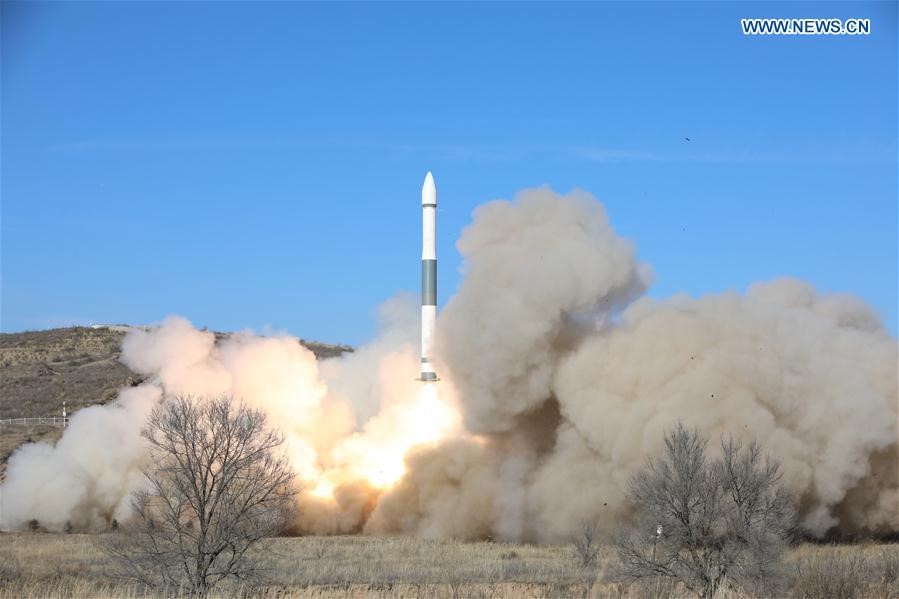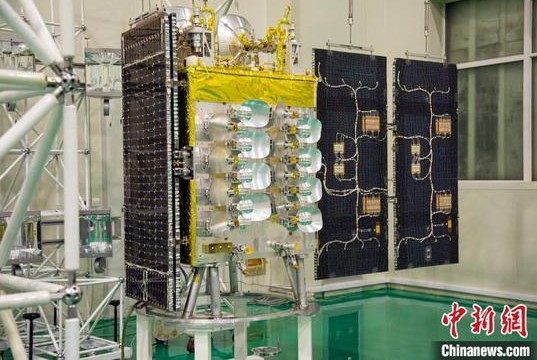Impressions from 2019—The Year in China's Space Industry
by Blaine Curcio
Hong Kong, January 3, 2020--A lot happened in the Chinese space industry in 2019. So much, that my friend and collaborator Jean Deville recently recorded a podcast on the year that was, with our conversation going nearly 2 hours, and we still felt like there was much more to say. To capture everything that happened in China in space in 2019 in a single article would make for an incredibly long article, so for the sake of brevity, I’ve distilled our nearly 2 hours, plus everything else we did not get to, into a 2019 in review on the Chinese space industry, from my perspectives. (Listen to the podcast here)
Lower Launch Total, but More Mature Launch Industry
China led the world in number of launches in both 2018 and 2019, although the country saw a drop in 2019 following what was a peak year for several government programs in 2018, with 2019 seeing 33 launches by China with two more still to go as of time of writing, compared to 39 in 2018. Despite this drop, the launch industry in China became more balanced. This was particularly true in the case of the Kuaizhou-1A rocket, manufactured by Expace.
 |
| Kuaizhou-1A Rocket |
The Kuaizhou-1A, many would rightly say, is a repurposed missile from CASIC that is converted by Expace—a nominally commercial subsidiary—into a small rocket. But, that does not take away from the fact that a launch company founded in 2016 successfully completed 5 launches in 2019, with all 5 coming after 30 August, and with 2 coming within 7 hours of one-another at the same launch site. With the Kuaizhou-1A now fairly flight-proven, next year will be an important one for Expace, with the planned first launch of its Kuaizhou-11, a rocket with around 5x the payload mass to orbit of the Kuaizhou-1A (around 1500kg compared to 300). With the small launch market looking increasingly competitive, Expace can to some extent compete on speed/response with its Kuaizhou-1A, but will be well-positioned by bringing into service an order-of-magnitude larger rocket in the Kuaizhou-11.
Other than Expace, 2019 saw iSpace complete the first orbital launch by a private Chinese rocket company, with its Hyperbola-1 launching into orbit in July of this year. We also saw LandSpace raise a massive 500 million Yuan (US$70 million) C-Round of funding in December, with this an important step for the development of the company’s ZQ-2 medium rocket. With multiple commercial rocket companies capable of launching with some regularity, it will become increasingly necessary for the industry in China to become more open to these private companies actually doing business (rather than R&D), with this being a complicated issue in China given incumbents’ power. The launch industry has expected some degree of deregulation for some time now, as iSpace, along with several other private launch companies including LandSpace, OneSpace, etc., have been developing rockets over the past 2-4 years. The companies are now reaching the stage of launching, with several companies have talked about capacity to produce 20-30 small-medium rockets per year, each, by 2020 or 2021. With this glut of launch supply coming (not just in China), there will need to be a major increase in demand for putting things into orbit. 2019 has started to see possible green shoots of such demand.
Constellations of All Types
The most obvious answer to “how do we fill this huge glut of launch supply”, is of course to launch massive constellations of hundreds or thousands of satellites. While China’s major state-owned constellations have seen a relatively quiet 2019, with zero satellites launched between Hongyan, Hongyun, and Xingyun, 2019 has seen increasing interest by private companies in constellations, though this has led to some challenges.
Roughly a dozen companies in China today are building business models around the concept of low-earth orbit IoT/narrowband satellites, sometimes cubesats, sometimes smallsats, with the companies sometimes focusing more on applications or equipment, or sometimes more on satellites themselves. This has led to a certain degree of difficulty to differentiate, and has also made it difficult for constellation companies to raise larger, later rounds of funding, as there are so many companies developing what seem to be fairly similar business models.
 |
| Galaxy Space Q/V-band Test Satellite |
In terms of constellations in China, 2019 saw only one major financing round, however that financing round was indeed quite a major one indeed. Galaxy Space, a company developing Q/V-band technology for communications constellations, announced in September a round of funding that valued the company at 5 billion yuan, or around US$700 million, i.e. nearly to “unicorn” status of US$1 billion valuation, before a single satellite has launched. One of the company’s major investors to now has been Shunwei Capital, the VC firm of Xiaomi, the IoT and 5G mobile phone company. Xiaomi’s CEO and multibillionaire Lei Jun has become increasingly visible in his support of Galaxy Space, a likely contributor to the company’s bubbly valuation given Lei’s deep connections in the Beijing tech investment scene. Galaxy Space will launch its first test satellite—a Q/V-band LEO satellite with 10 Gbps of throughput weighing a few hundred kg—before the end of this year, on, you guessed it, a Kuaizhou-1A.
While Galaxy Space will soon have its satellite in orbit, it seems unlikely that a privately funded company in China would be capable of getting market access with its own LEO constellation. More likely, in my view, is that the company tries to prove a concept for a LEO constellation system using Q/V-band, and sell said concept to CASC or CASIC in development of Hongyan/Hongyun, with Galaxy Space then concentrating on integration of the constellation (which they designed) with IoT (of which Xiaomi has an entire ecosystem). While 2019 has seen a quiet year on the constellations front in China, 2020 is likely to accelerate, with all three state-owned constellations launching more test satellites.
What Else Did We See in 2019?
Another highlight of the year that was, from my perspective, was the increasing internationalization of the Chinese space industry in 2019. Several significant projects began or hit major milestones in 2019, with this including projects in Egypt, Sudan, Ethiopia, and others. Moving forward, China is likely to use space as a tool of soft power in much the same way it has been utilized by the west to now, with this likely leading to increasing cooperation in the space domain between China and primarily developing countries, but in some instances developed ones as well.
Finally, China’s space industry in 2019 started to see a few more instances of environmental concern by everyday people. For years, spent rockets have been falling on villages downrange in China’s inland launch sites, in particular Xichang. Videos of the spent rockets leaking poisonous fuel have been increasingly circulated online, in both Chinese and English media. The response by Chinese internet users has become more outraged over the past year or so (in my observation), though many users do still take the view that these villagers are compensated and that rockets are an important thing for the nation to develop. Interestingly, however, some companies are trying to market themselves as such, with the most interesting being LandSpace, which points out that the company’s liquid metholox engines are “eco-friendly, low carbon emission, nontoxic, pollution-free, compliant with the development trend of next-generation launcher technology”.
Conclusion
2019 was most likely the last year in the Chinese space industry where we can see breakneck growth with absolutely no revenues from the vast majority of private/commercial companies. As 2020 arrives, many of these companies are going to start operations, which will require an infrastructure of regulations, policies, technology, etc., to develop.
While we have seen exceptional growth in the Chinese space industry from 2014-2019, it has remained entirely the investment phase. If the initial investors are truly to get decent returns on their investment, the implied growth that we must still see is enormous. 2020 may or may not bring such growth, but it will most certainly bring us a big step closer to finding out whether such growth is even on its way at all.
--------------------------------------------

Blaine Curcio is the Founder of Orbital Gateway Consulting. He’s an expert on the commercial space and satellite industries with a focus on the Asia-Pacific region. He can be reached at: blaine@orbitalgatewayconsulting.com





